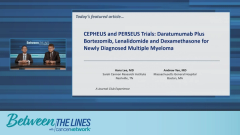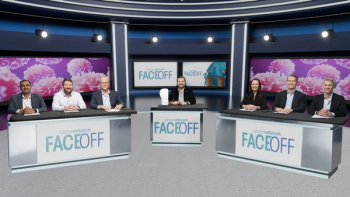
CEPHEUS Trial: Design/Baseline Characteristics
Panelists discuss how recent data support the use of quadruplet regimens—including anti-CD38 antibodies—even in older or moderately frail patients with newly diagnosed multiple myeloma, shifting treatment decisions from transplant eligibility to functional status and depth of response.
Episodes in this series

Recent advancements in the treatment of newly diagnosed multiple myeloma have increasingly focused on the use of quadruplet regimens, even among patients traditionally considered ineligible for transplant. This shift reflects a broader reevaluation of treatment frameworks, moving beyond the binary classification of transplant eligibility to a more refined focus on a patient’s functional status and frailty. Recent data, particularly from studies presented in the past year, have supported the efficacy and tolerability of four4-drug combinations in a wider population, including those with deferred transplants or mild frailty.
One pivotal study evaluated patients with newly diagnosed multiple myeloma who were either transplant-ineligible or had deferred transplant. Participants had an ECOG performance status of 0 to 2 and a frailty score of 0 or 1. They were randomized randomly assigned to receive either a quadruplet regimen including an anti-CD38 monoclonal antibody with a proteasome inhibitor, immunomodulatory agent, and dexamethasone, or a triplet regimen without the monoclonal antibody. After eight 8 cycles, the proteasome inhibitor was discontinued, and maintenance therapy continued with either the monoclonal antibody plus immunomodulator or the immunomodulator alone. The primary endpointend point was minimal residual disease (MRD) negativity, with secondary endpointend points including progression-free survival and sustained MRD negativity.
The enrolled population reflected real-world patients, with a median age around 70 and a majority exhibiting standard-risk cytogenetics. The study demonstrated that many older or moderately frail patients can tolerate quadruplet regimens and benefit from deeper, more durable responses. This aligns with a broader trend in multiple myeloma management, where treatment intensity is guided less by age or transplant eligibility and more by physiologic resilience and therapeutic goals. As these regimens become more accessible and well-tolerated, they are poised to become a foundational component of front-linefrontline therapy across a broader spectrum of patients.
Newsletter
Stay up to date on recent advances in the multidisciplinary approach to cancer.




















































































